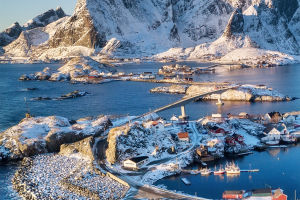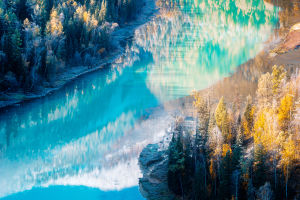With the boom of Mars exploration, have you ever thought about going to Mars? Martian geomorphology refers to the geographic appearance of the surface of Mars. The most spectacular features on Mars are the Grand Canyons located in the southern hemisphere, especially the "Sailor's Valley".
The Mariner's Valley consists of a series of canyons stretching over 5,000 kilometers, 500 kilometers wide, and up to 6,000 meters deep. Such a canyon is incomparable to any canyon on Earth. The Olympus Shield volcano is even more amazing.
This 600-kilometer caliber crater is 26 kilometers higher than the surrounding area, which is more than three times the size of Mount Everest on Earth. Such mega-landscapes as the Sailor Valley and Olympus Volcano are unique in the entire solar system.
Claire Cousins conducts research in the middle of this wilderness. She points the lens of her highly sensitive scientific camera at the rocks of the land to find traces of life on Mars. But she doesn't go to Mars; she is on Earth, in northern Iceland. Many planetary scientists, like her, travel to all corners of the world to experience what it's like to be on Mars from Earth.
These places have a "Mars-like surface" that can be used to test detection equipment, house scientific experiments, and even serve as a training base for astronauts on future Mars programs.
In these places, you can also experience what it's like to walk on the "Red Planet". With this "travel guide", you can also start your "trip to Mars".
1. The Atacama Desert, Chile
In the heart of Chile's Atacama Desert, near the abandoned mining town of Yungay, south of Antofagasta, is one of the closest places in the world to the surface of Mars. Sometimes it doesn't see a drop of rain for decades. With an average annual rainfall of fewer than 10 millimeters, it's one of the driest places in the world.
"It looks very close to the surface of Mars as it is now," said Cousins, a senior lecturer at the University of St. Andrews in England. "Mars, as it is now, is a very cold, barren, stony desert planet."
2. McMurdo Dry Valleys, Antarctica
The McMurdo Dry Valleys, located in Antarctica, the coldest continent in the world, has no snow cover and is as uninhabitable as Mars. Observational studies of the valley floor climate indicate that temperatures here range from -15°C to -30°C year-round, and parts of the valley may not have received rain for millions of years.
Year-round precipitation ranges from 7 to 11 mm, falls as snow, and quickly sublimates to gas and disappears.
A study on the extreme decay of beryllium 10 in the atmosphere shows that a similar situation occurs on Mars, where carbon dioxide frost on the soil surface sublimates rapidly, a process that may have led to the formation of unique gullies on the surface.
3. Hanksville, Utah
Deep in the canyonlands of the Colorado Plateau is an outcrop of rock formations spanning four states in the southwestern United States that date back to the late Jurassic. Silt and sand left over from ancient swamps have created an orange-red landscape in the Utah desert that resembles the surface of Mars.
4. Tenerife, Canary Islands
Tenerife was formed by volcanic activity 3 million years ago. Now that the volcano is dormant, Tenerife has become a famous vacation destination and a great place to get a glimpse of Martian life.
Located in the center of the island at an altitude of 3,718 meters, the hollow lava tubes and volcanic caves scattered on the slopes of the mountain are very close to the caves on Mars. Astrobiologists believe that Martian life may have lived in such caves.


